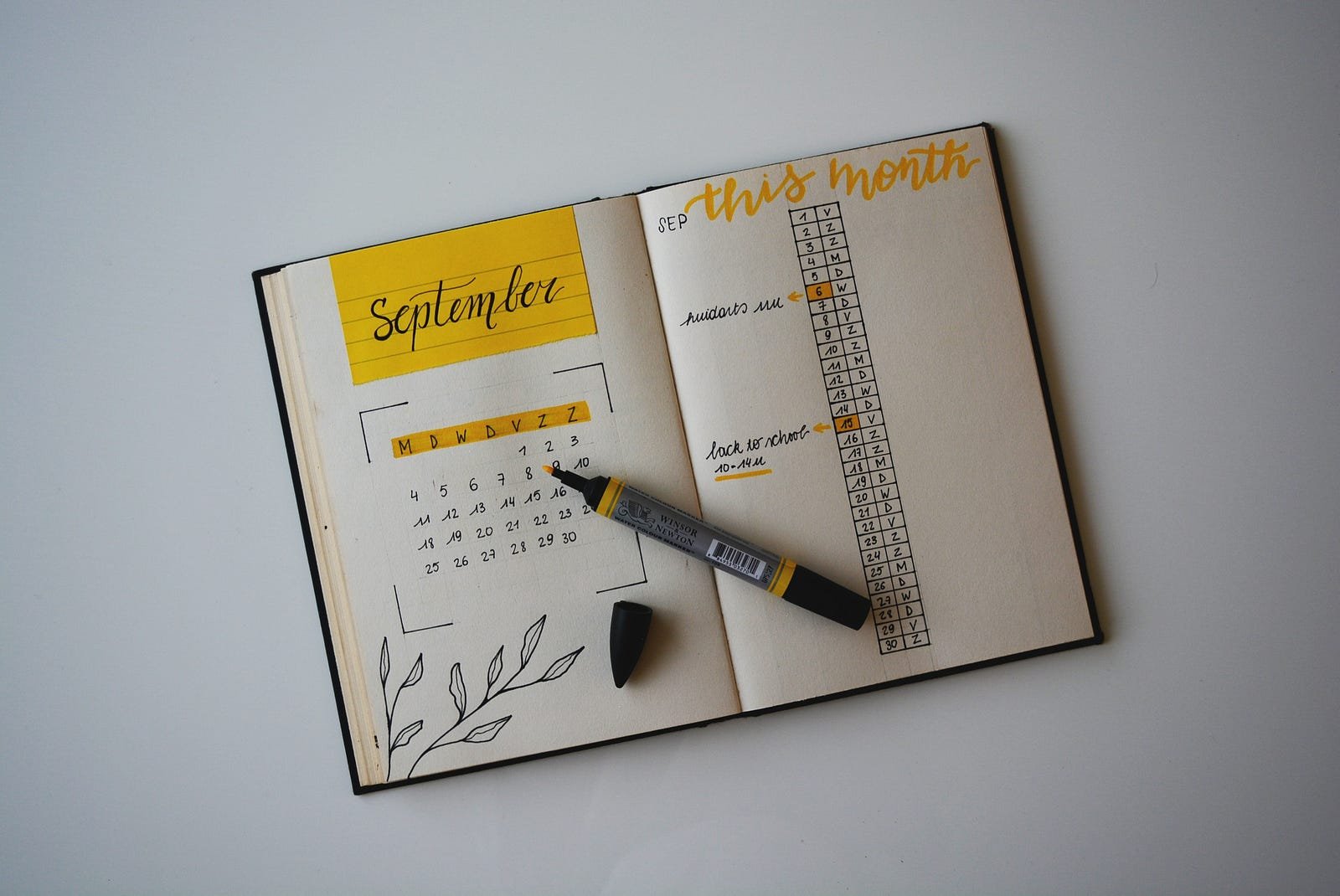How to Use a Bullet Journal as Your Second Brain
& How I use my own
Photo by Estée Janssens on Unsplash
You’re scatterbrained and disorganized. You have sticky notes everywhere. You make notes on any scrap of paper you can find just to lose it. You need a place to keep track of everything.
You need a second brain.
The digital age has revolutionized note-taking, with multiple apps designed specifically to optimize note-taking.
But what if you’re not a techy person? And you prefer to write it down on paper?
That’s why the bullet journal is the perfect answer. Today, I’m going to show you how to use a bullet journal to store your second brain.
What is a Second Brain?
A second brain is where you keep all your notes, thoughts, ideas, etc. It’s designed to help you organize.
You could use digital interfaces like Notion, Apple Notes, Obsidian, or Roam Research. Or you might be like me and need to write things down.
Enter the bullet journal.
What is a Bullet Journal?
A bullet journal is a personal organization system. Ryder Carrol developed the system as a way for him to deal with his ADHD.
The beautiful thing about the bullet journal is that it can be adapted to fit any person’s needs. There are no rules to using a bullet journal.
There are some general pages most journals incorporate, like:
Key
Index
Future log
Monthly log
Daily log
Other than that, the journal is your playground.
Some people choose to get fancy with them, but you don’t have to be. The bullet journal is meant to work for you, not the other way around.
All you need is a notebook and a pen. You could use spiral-bound college notebooks, and it wouldn’t matter.
You’re probably wondering how to adapt it to your needs. Great question! Now, let me show you how I use mine.
The Index
image by author
We start with an index. The index is where you will keep track of your various collections. You write down what your page is about and where to find it.
Some people don’t like the index and choose not to use it. I choose to use it because it saves me time when looking for something.
On it, I write down what my different note pages are. Whenever I start a fresh page, I’ll write it down in the index with a title summary of what it is and the page number.
Take, for example, the Save the Cat! Beat Sheet on page 49. Using the numbered pages, I can find it quickly.
image by author
If your journal isn’t numbered, you can number it yourself or skip it altogether.
Get as creative or minimal with the pages as you like. You might keep a collection like:
A running to-do list
Documentaries you want to watch
Your review of a recent podcast episode
These collections help you keep information out of your head and are organized in one place.
You can take all those sticky notes and index cards you had and transfer them into one notebook.
I used to have notes all over my desk. I could never find what I was looking for. Now, everything goes in my journal.
I can keep my to-do lists, notes, and ideas all in the same place. It allows me to refer back to them when I need them.
The Monthly
image by author
When it comes down to the nitty-gritty, I have a monthly and weekly spread. On my monthly spread, I write the days down vertically.
I’ll put any events or notes I have on my calendar. I like leaving a space on the side to track my goals and remind me why I’m doing them.
I also added an ‘anti-vision’ this month to key into my motivation. An anti-vision is the opposite of what you want. It’s your worst-case scenario.
I wrote a brief statement of what my worst life looked like. Whenever I’m slacking off, I read it to keep myself straight.
Perhaps one of the most useful spreads I have is my weekly spread. I’ll have broken down my goals in further detail and to-do items.
The Weekly
image by author
I’ll keep my top three goals for the week front and center. I section out each day so I can plan it and leave space for whatever I have to do that week.
I also like to make a schedule and time block my tasks. If I turn my notebook sideways, I can fill in each day with blocks of my schedule.
During the week, I’ll schedule tasks or move them to a better time. My weekly serves as my overview of what I need to do.
You could go even further and keep a daily log. In the end, it’s about creating your own system that works.
Final Thoughts
Say goodbye to messy desks and cluttered minds. With the bullet journal system, you can condense all your thoughts into one place.
When you use the bullet journal as a second brain, you never lose your thoughts. You can make your bullet journal into whatever you want it to be.
Your thoughts and ideas are always a page away.
It’s your turn.
Ready to level yourself up and become the best version of yourself? Download my free journaling guide now.
Maggie Kelly is a freelance writer who writes about mental health, self-help, and psychology. Contact at maggiepkelly@gmail.com





